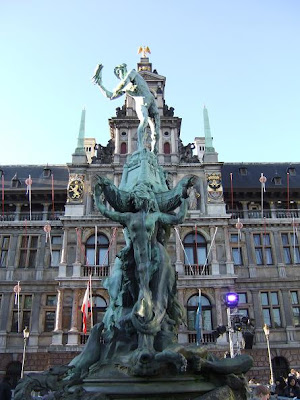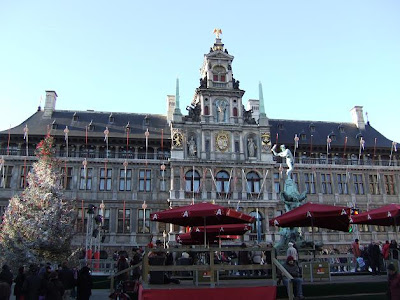The Bermuda Triangle (also known as Devil's Triangle) is a nearly half-million square-mile (1.2 million km2) area of ocean roughly defined by Bermuda, Puerto Rico, and the southernmost tip of Florida. The Bermuda Triangle became popular through representation by the mass media as a paranormal site in which the known laws of physics are either violated, altered, or both.
One of the classic disappearances is Flight 19, a flight of Avenger TBMS (torpedo bomber medium)that dissapeared on December 5th 1945 while on a training flight.The squadron Leader Lt (jg)Charles Taylor reported being in trouble and disoriented 40 minutes into the flight. The controllers at Ft. Lauderdale tried to offer assistance, but lost contact with Flight 19. It has never been found.
While there is a common belief that a number of ships and airplanes have disappeared under highly unusual circumstances in this region, the United States Coast Guard and others disagree with that assessment, citing statistics demonstrating that the number of incidents involving lost ships and aircraft is no larger than that of any other heavily traveled region of the world. Many of the alleged mysteries have proven not so mysterious or unusual upon close examination, with inaccuracies and misinformation about the cases often circulating and recirculating over the decades.
Everything from aliens to electromagnetic energy has been used to explain the triangle.
The area known as the Bermuda Triangle encompasses 2,414,016 sq. km (941,466 sq. miles) of open sea between Bermuda, Puerto Rico, and the southeastern shoreline of the U.S. This bit of the Atlantic is the source of the most famous, and certainly the most baffling, legend associated with Bermuda.
Tales of the mysterious Bermuda Triangle persist, despite attempts by skeptics to dismiss them as fanciful. Below are three of the most popular. Can they be true? See what you think:
In 1881, a British-registered ship, the Ellen Austin, encountered an unnamed vessel in good condition sailing aimlessly without a crew. The captain ordered a handful of his best seamen to board the mysterious vessel and sail it to Newfoundland. A few days later, the ships encountered each other again on the high seas. But to everyone's alarm, the crewmen who had transferred from the Ellen Austin were nowhere to be found -- the ship was completely unmanned!
Another tale concerns the disappearance of a merchant ship, the Marine Sulphur Queen, in February 1963. It vanished suddenly without warning, and no one could say why. The weather was calm when the ship set sail from Bermuda, and everything onboard was fine -- the crew never sent a distress signal. In looking for explanations, some have theorized that the ship's weakened hull gave way, causing the vessel to descend quickly to the ocean floor. Others attribute the loss to more mysterious forces.
The most famous of all the legends concerns an incident in 1945. On December 5, five U.S. Navy bombers departed from Fort Lauderdale, Florida, on a routine mission. The weather was fine; no storm of any kind threatened. A short time into the flight, the leader of the squadron radioed that they were lost, and then the radio went silent. All efforts to establish further communication proved fruitless. A rescue plane was dispatched to search for the squadron -- but it, too, disappeared. The navy ordered a search that lasted 5 days, but there was no evidence of any wreckage. To this day, the disappearance of the squadron and the rescue plane remains a mystery as deep as the waters of the region.
How do those who believe in the Bermuda Triangle legend account for these phenomena? Some contend that the area is a time warp to another universe; others think the waters off Bermuda are the site of the lost kingdom of Atlantis, whose power sources still function deep beneath the surface. Still others believe that laser rays from outer space are perpetually focused on the region, or that underwater signaling devices are guiding invaders from other planets, and that these aliens have chosen the site for the systematic collection of human beings for scientific observation and experimentation. (Smacks of The X-Files, doesn't it?) Some, drawing upon the Bible's Book of Revelation, are fully persuaded that the Bermuda Triangle is really one of the gates to Hell (in this version, the other gate lies midway between Japan and
the Philippines, in the Devil's Sea).
No matter what your views on these mysteries, you're bound to provoke an excited response by asking residents what they think about it. On Bermuda, almost everyone has an opinion about the island's biggest and most fascinating legend.









 Twenty miles down the coast, Cabo San Lucas pulses with shops, restaurants, and nightclubs. Those in search of lively beaches, kayak excursions, dancing to the wee hours, sunset cruises, and such will find Cabo San Lucas just their speed. Connecting the two towns is a coastal "corridor," along which lie resorts both grand and intimate and many famous golf courses. One side of the corridor offers endless views of sand and sea, while along the other side is the quiet desert, with the majestic mountains beyond.
Twenty miles down the coast, Cabo San Lucas pulses with shops, restaurants, and nightclubs. Those in search of lively beaches, kayak excursions, dancing to the wee hours, sunset cruises, and such will find Cabo San Lucas just their speed. Connecting the two towns is a coastal "corridor," along which lie resorts both grand and intimate and many famous golf courses. One side of the corridor offers endless views of sand and sea, while along the other side is the quiet desert, with the majestic mountains beyond.






















